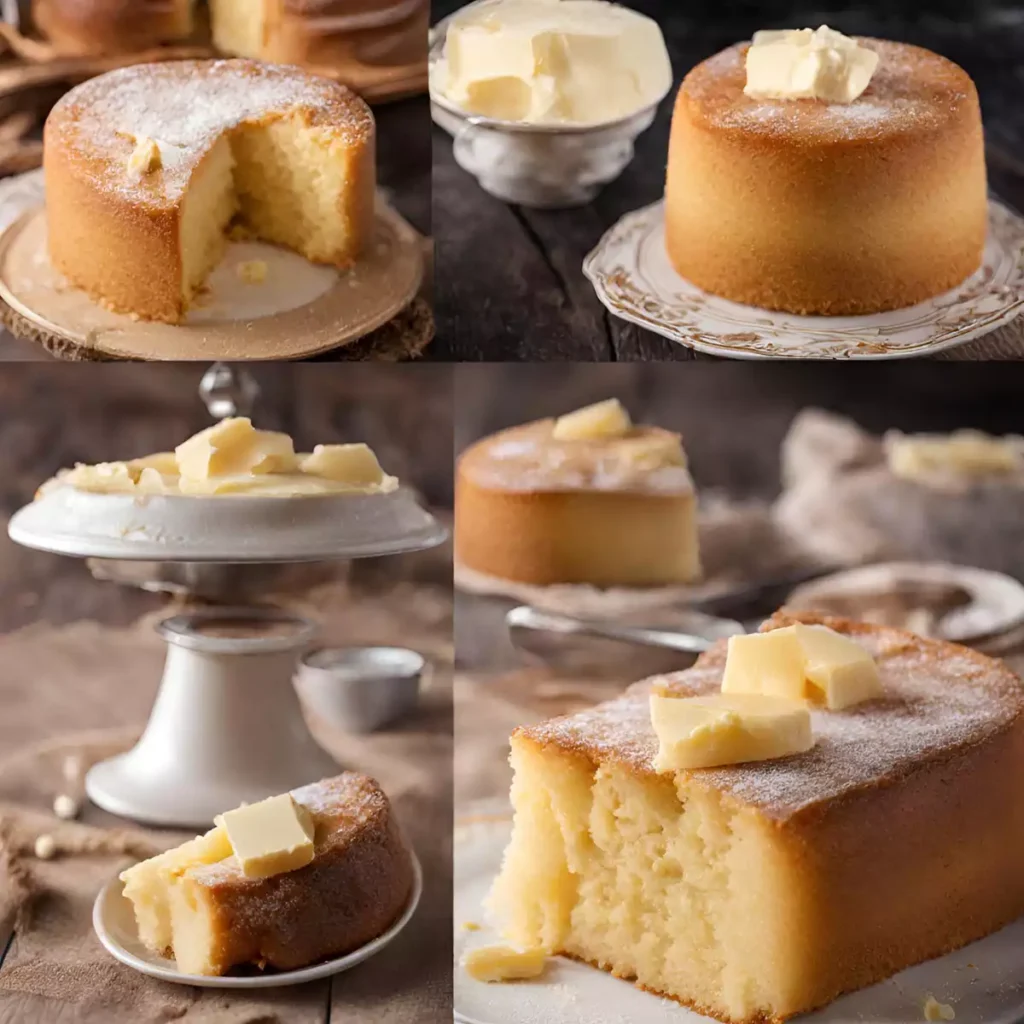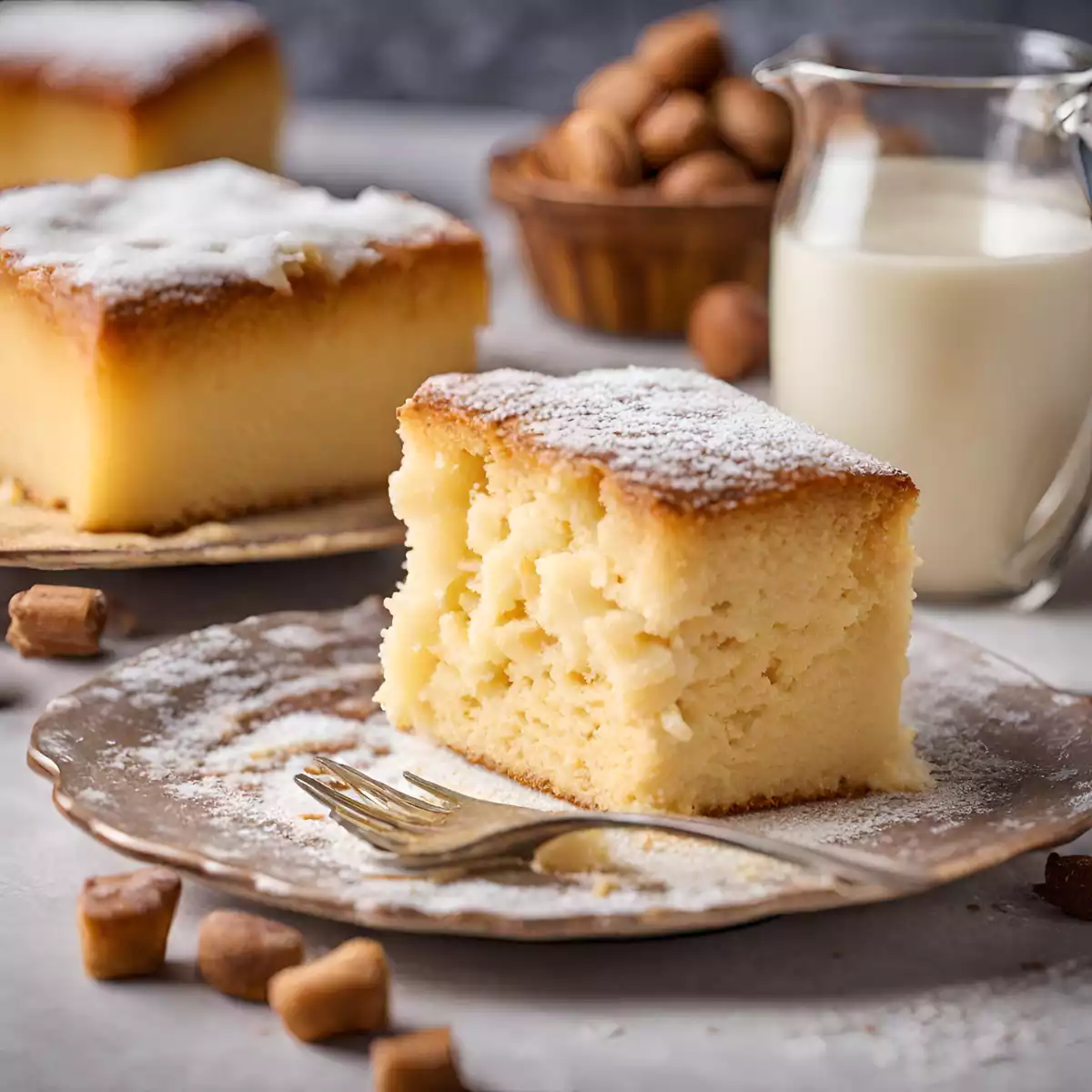Introduction to Butter Cake
Butter cake, a staple in the world of delightful desserts, charms with its rich, velvety texture and golden crust. It’s a testament to the magic simple ingredients can work, bringing joy and indulgence to every bite. In this article, we’ll embark on a flavorful journey to uncover what is butter cake made of, dive deep into its key ingredients, and explore step-by-step instructions to bake the perfect cake. From the basic components to popular variations and expert baking tips, you’ll gain all the insights needed to master this classic treat.
The Timeless Appeal of Butter Cake
Butter cake has long been a celebrated dessert, with each slice promising a taste of indulgence that has captivated bakers and taste buds alike for centuries. As we delve into its composition, it becomes clear why this dessert holds such a special place at gatherings and family tables.
The Role of Butter in Texture and Flavor
At the heart of every butter cake is, unsurprisingly, butter, which imparts a luxurious richness and moistness that makes the cake so irresistible. The creaming of butter and sugar is more than just mixing; it’s a crucial step that incorporates air into the batter, helping the cake to rise beautifully during baking. This process is pivotal in creating the light and airy texture that butter cake is famous for.
Sweetening with Granulated Sugar
Granulated sugar does more than just sweeten the mix; it’s essential for achieving the perfect crumb texture that butter cakes are known for. When beaten with butter, sugar helps to trap air, which expands under the heat of the oven and gives the cake its characteristic fluffiness.
Eggs: The Structural Backbone
Eggs in a butter cake aren’t just an afterthought—they’re fundamental for structure and moisture. Each egg works to bind the ingredients together, ensuring that your cake doesn’t crumble when you take that first, eagerly anticipated bite. Moreover, they contribute to the overall richness, making the cake’s texture smooth and enjoyable.
Flour, Baking Powder, and Baking Soda
The blend of all-purpose flour, baking powder, and baking soda forms the backbone of our cake. Flour provides the structure, while the leavening agents, baking powder, and baking soda, are critical for making the cake rise. This combination ensures that the cake is not only tall and stately but also has a tender softness that makes each piece more tempting than the last.
The Subtle Impact of Milk
Adding milk to your butter cake does wonders for its texture and flavor. It tenderizes the crumb and adds a hint of richness that balances the sweetness perfectly. Milk also interacts with the flour to soften the gluten, ensuring the cake is just the right kind of soft.
In crafting a perfect butter cake, each ingredient must be chosen and used thoughtfully, as they all contribute uniquely to the final masterpiece. As we move forward, keep in mind these essential components that make up the beloved butter cake, and prepare to bring this classic dessert to life in your own kitchen.
Deep Dive into Ingredients and Methodology
Now that we’ve explored the essential elements that form the basis of a BC, let’s delve into the detailed methodology that transforms these simple ingredients into a sumptuous dessert. Each step in the baking process is crucial for achieving that perfect texture and taste.

Preparing the Batter
The journey to a perfect BC starts with preparing the batter, a process that might seem simple but requires precision and care.
- Preheat the Oven: Always start by heating your oven to 350°F (175°C). A properly heated oven ensures that the cake cooks evenly and rises consistently.
- Prepare the Cake Pan: Grease and flour a 9×13-inch baking pan. This prevents the cake from sticking and helps in achieving a smooth, even crust.
- Cream the Butter and Sugar: In a large bowl, cream the softened butter and granulated sugar until the mixture is light and fluffy. This not only sweetens the cake but also introduces air into the batter, which is vital for a light texture.
- Add the Eggs: Beat in the eggs one at a time, ensuring each is fully incorporated before adding the next. This method helps maintain the structure and adds moisture to the batter.
- Combine the Dry Ingredients: In a separate bowl, sift together the all-purpose flour, baking powder, and baking soda to ensure they are evenly distributed and free of lumps.
- Alternate Wet and Dry Ingredients: Begin by adding a portion of the dry ingredients to the butter mixture, then some of the milk, and continue alternating, starting and ending with the dry ingredients. This technique prevents the batter from becoming too thick or too liquid, promoting a uniform texture.
Baking and Cooling
Once the batter is mixed to just the right consistency, it’s time to bake and then cool it properly, both of which are key steps in achieving the ultimate BC.
- Pour the Batter into the Pan: Gently pour the batter into the prepared pan, smoothing the top with a spatula. Ensuring the batter is even can prevent uneven baking and an irregular cake surface.
- Bake the Cake: Place the pan in the center of the oven and bake for 30-35 minutes. Avoid opening the oven frequently, as sudden temperature changes can cause the cake to collapse.
- Cool and Frost: Allow the cake to cool in the pan for about 10 minutes before transferring it to a wire rack to cool completely. Once cool, you may choose to frost it. This not only adds flavor but also seals in moisture, enhancing the cake’s texture.
By following these steps diligently, you ensure that your butter cake turns out moist, fluffy, and irresistibly delicious every time. Next, we’ll explore some popular variations of butter cake that can add a delightful twist to this classic recipe.
Variations and Troubleshooting
Butter cake is a versatile dessert that lends itself to numerous variations. Whether you’re adding a twist of lemon for a zesty flavor or experimenting with a chocolate swirl, the possibilities are endless. Alongside exploring these delicious variations, we’ll also tackle some common baking issues to ensure your butter cake turns out perfectly every time.
Popular Variations of Butter Cake
Experimenting with different flavors can transform the classic butter cake into something uniquely delightful. Here are a few popular options:
- Lemon Butter Cake: Infuse your batter with the zest and juice of a lemon for a refreshing twist. This version is especially popular in the spring and summer, bringing a bright, citrusy note to the rich butter cake.
- Chocolate Butter Cake: By adding cocoa powder to the batter, you can create a deep, rich chocolate version that’s sure to satisfy any chocolate lover’s cravings. For an extra decadent treat, mix in some chocolate chips before baking.
- Marble Butter Cake: For those who can’t decide between vanilla and chocolate, marble butter cake is the perfect solution. Simply swirl vanilla and chocolate batters together before baking to achieve a stunning and tasty effect.
- Pound Cake: A denser variant, pound cake follows the traditional recipe but with equal weights of butter, sugar, eggs, and flour. It’s renowned for its rich texture and buttery flavor, making it a hearty option for any occasion.
Tips for the Perfect Butter Cake
Even with the right ingredients and enthusiasm, sometimes things don’t go as planned. Here are some tips to troubleshoot common issues:
- Cake Too Dense: This might happen if there’s too much flour or if the batter has been overmixed. Be sure to measure your ingredients carefully and mix just until combined.
- Cake Too Dry: Insufficient butter or milk could be the culprit. Make sure to follow the recipe closely, and don’t skimp on these crucial ingredients.
- Cake Didn’t Rise: This could be due to expired leavening agents or incorrect oven temperature. Always ensure your baking powder and soda are fresh and preheat your oven for the best results.
- Gummy Texture: A cake with too much sugar or undercooked flour can turn out gummy. Balance the sugar and make sure to mix dry ingredients thoroughly into the batter.
- Sinking Middle: If your cake sinks in the middle, it might be underbaked or disturbed during baking. Check that your oven temperature is accurate and avoid opening the oven door too frequently.
The Joy of Butter Cake
No matter the occasion, BC is a classic choice that never fails to please. With these variations and troubleshooting tips, you’re well-equipped to handle anything the baking process might throw at you. Enjoy the process of creating and sharing your delicious masterpiece, knowing that each slice offers a moment of sweet, buttery bliss.
In our next section, we will explore some frequently asked questions about butter cake, helping to clarify any additional queries you might have about making the perfect cake.
Frequently Asked Questions About Butter Cake
Butter cake, with its rich flavor and tender crumb, often raises questions among baking enthusiasts looking to perfect their craft. Here are some answers to common queries that might help you as you embark on your BC baking adventures.
Can I Use Margarine Instead of Butter in Butter Cake?
While butter is the traditional choice due to its flavor and moisture content, margarine can be used as a substitute in BC. However, keep in mind that margarine may alter the cake’s flavor and texture slightly. For the best results, choose a high-quality margarine with a fat content similar to that of butter.
Can Butter Cake Be Made Ahead of Time?
Absolutely! BC is an excellent choice for preparing in advance. Once cooled, wrap the cake tightly in plastic wrap and store it at room temperature for up to 3 days. If you need to keep it longer, you can freeze it for up to a month. Just be sure to frost the cake only just before serving to keep it fresh and moist.
How Can I Prevent My Butter Cake from Sinking in the Middle?
To prevent your cake from sinking in the middle, ensure that you:
- Preheat your oven to the correct temperature before baking.
- Avoid opening the oven door frequently during the baking process, as this can cause temperature fluctuations that affect the cake’s structure.
- Bake the cake thoroughly. A cake that is underbaked may collapse in the center. Use a toothpick or cake tester to check if the middle is done before removing it from the oven.
What Are Some Tips for Frosting a Butter Cake?
Frosting a butter cake can be as simple or as elaborate as you like. For a smooth frosting experience:
- Ensure the cake is completely cool before applying any frosting.
- Choose the right frosting. Buttercream, cream cheese, or ganache all work beautifully with BC.
- Apply a crumb coat first. This initial thin layer of frosting catches any loose crumbs and creates a smooth base for the final layer.
- Let the crumb coat set in the fridge for about 30 minutes before applying the final layer of frosting.
Can I Add Fruits or Nuts to My Butter Cake?
Adding fruits or nuts can introduce additional flavors and textures to your butter cake. Fold in chopped nuts or fruit pieces gently into the batter just before pouring it into the pan. Make sure the additions are not too wet, as excess moisture can affect the cake’s structure.
With these FAQs addressed, you’re more equipped to bake a butter cake that not only tastes delightful but also looks professionally made. Happy baking, and enjoy the wonderful journey of creating and perfecting your butter cake!

